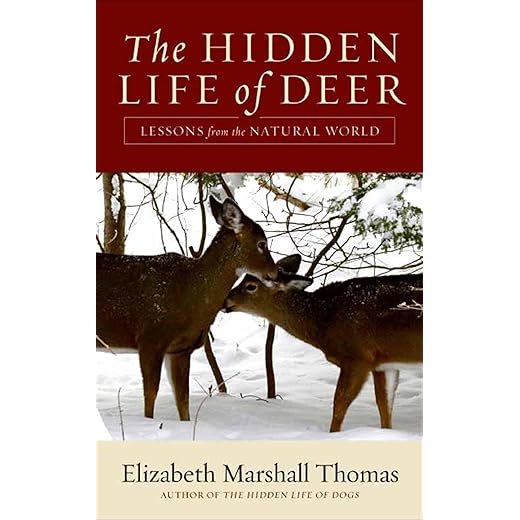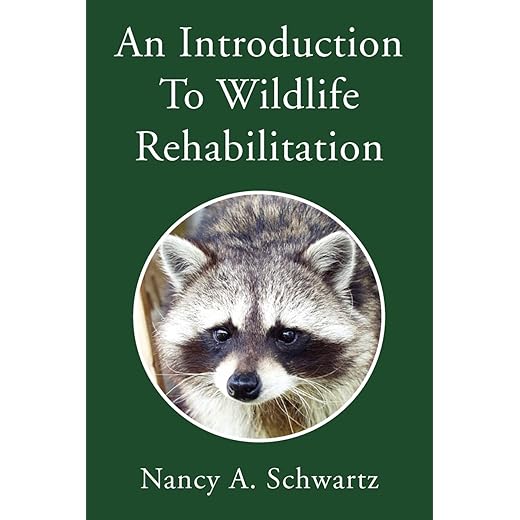Introduction to the Wild World of Deer on Treadmills
In an unexpected twist to wildlife research, scientists have taken to observing DEER running on TREADMILLS. This fascinating approach allows researchers to delve deep into the behavior and physiology of these graceful creatures. By placing deer in a controlled environment, scientists can gather valuable insights that resonate far beyond the gym.
This article explores what we can learn from observing deer in motion. First, it will highlight the fascination with deer behavior, shedding light on why these animals are worth our attention. Next, it will delve into the science behind treadmill studies, explaining how this innovative method enhances our understanding of wildlife.
The focus then shifts to the physical fitness and adaptation in deer, revealing the incredible ways they respond to their environment. From there, readers will discover lessons for human fitness and well-being, drawing parallels between deer and our own wellness journeys. Finally, the article discusses conservation insights from deer studies, underscoring the importance of preserving these magnificent animals. Join us as we uncover the remarkable world of deer on treadmills!
Amazon.com
The Fascination with Deer Behavior
Understanding deer behavior in their natural habitat reveals much about their agility, endurance, and social dynamics. These mammals are not just symbols of grace; they are equipped with remarkable adaptations that enable them to navigate their environments with ease. In a forest, a deer can leap over obstacles, sprint at impressive speeds, and maintain that pace over long distances while evading predators. This innate resilience sparks curiosity among wildlife enthusiasts and scientists alike.
Agility and Endurance
Deer can sprint up to 30 miles per hour for short distances, showcasing their swift movements while avoiding threats. Their powerful hind legs and lightweight bodies allow for high leaps and rapid acceleration, making them masters of escape. Furthermore, their ability to cover vast territories in search of food highlights their stamina, providing important lessons in endurance that can inspire fitness enthusiasts.
Social Dynamics
Deer are also social animals, often seen in small groups or herds, where they establish hierarchies and communication strategies. Observing these social structures helps researchers understand how cooperation can be essential for survival—valuable insights for various fields, from ecology to psychology.
This intricate tapestry of behavior not only captivates researchers but also underlines why treadmill studies are so significant. The close examination of these traits in a controlled setting provides critical data that translates into broader ecological knowledge. As we explore the science behind treadmill studies, it becomes evident how these insights can inform us about deer and, potentially, our own lives.
The Science Behind Treadmill Studies
To decode the complexities of deer physiology, researchers have ingeniously turned to treadmill studies, simulating natural conditions that allow controlled observation of these animals’ responses during exercise. By recreating various environmental factors—such as incline, speed, and even simulated predator presence—scientists gain invaluable insights into how deer adapt to physical stressors in their habitat.
Methodology
Researchers typically begin by selecting representative deer—often from a local population—to ensure findings are applicable to wild counterparts. Once acclimated to the treadmill, the following methodologies are employed:
Importance of the Research
The insights gained from these studies are crucial for wildlife biologists. By understanding deer’s energy management and adaptation strategies, researchers can better assess how environmental changes—like habitat loss or altered climates—impact their survival. Additionally, this research can inform conservation strategies, leading to more effective wildlife management practices.
This blend of rigorous scientific methodology and wildlife observation unveils not only the physical capacities of deer but also impacts strategies for promoting fitness and health in both animals and humans. With this understanding, the article will now transition into the discussion of physical fitness and adaptation in deer, exploring the remarkable adaptations that ensure their survival and resilience.
Physical Fitness and Adaptation in Deer
Deer are incredible examples of physical fitness adapted to their environments. Their bodies have evolved over time to thrive in diverse habitats, from dense forests to open grasslands. Key physical adaptations include conducive skeletal structures, efficient locomotion, and muscle composition designed for both short bursts of speed and enduring stamina.
Key Adaptive Traits
These physical strengths are further illustrated in treadmill research, where scientists can assess how variations in speed and incline affect a deer’s performance. Observing these adaptations provides a window into their resiliency and how such traits allow them to thrive even under stress.
Understanding the intricate interplay of physical traits not only highlights the adaptability of deer but also serves as a mirror, reflecting conclusions that may apply to human fitness. As we delve into the lessons that humans can glean from deer fitness routines and well-being practices, it becomes evident that nature indeed holds answers for us all.
Lessons for Human Fitness and Well-being
Understanding the physical fitness of deer can provide meaningful insights into human health and exercise routines. Treadmill studies of deer reveal strategies that individuals can adopt to enhance their own fitness journeys, focusing on endurance training and adapting to stressors.
Endurance Training
Just as deer engage in long-distance movement while foraging, humans can benefit from incorporating endurance workouts into their fitness regimens. Consider these parallels:
Adaptation Techniques
Deer have evolved to respond to dynamic environments, teaching humans the importance of adaptability:
The common theme of adaptation in both deer and human exercise underscores the necessity of resilience in fitness, motivating individuals to take their well-being into their own hands. As these lessons unfold, the next section will explore deeper conservation insights gained from the remarkable study of deer, enriching our understanding of wildlife and its relevance to human health practices.
Conservation Insights from Deer Studies
The knowledge gained from treadmill studies extends far beyond fitness and exercise; it has significant implications for conservation efforts. By examining the behavior and physical adaptations of deer, researchers are forging pathways to better habitat preservation and effective wildlife management strategies.
Behavioral Insights
Understanding how deer adapt to physical stressors can inform conservationists about the optimal conditions needed for these animals to thrive in their natural environments. Key insights include:
Wildlife Management Strategies
Incorporating treadmill insights into wildlife management can improve population control and habitat restoration:
The lessons learned from deer treadmill studies underscore the importance of scientific research in fostering wildlife conservation. As we continue to unravel these intricacies, it becomes clear that lessons from nature can guide us toward responsible stewardship and harmony with our environment.
In the subsequent conclusion, an exploration of how these insights can inspire a deeper commitment to conservation and personal wellness will tie it all together.
Conclusion: Embracing the Lessons of Nature
In exploring the world of deer on treadmills, important lessons emerge that extend beyond the bounds of animal behavior. By understanding how these graceful creatures adapt their physical fitness and resilience, they highlight the interconnectedness of nature and human health. The insights gained from treadmill studies not only inform conservation efforts but also offer valuable strategies for enhancing well-being and fitness.
Ultimately, recognizing the wisdom found in the natural world empowers individuals to take charge of their health in innovative ways. By appreciating and learning from these remarkable animals, society can forge a deeper connection to nature, fostering both personal and ecological harmony. As we move forward, let us embrace the lessons of nature and integrate its teachings into our daily lives.












This article was such an eye-opener! I never thought about how deer could teach us about fitness. I mean, we’re always looking for ways to improve our workouts, right? Those high-definition night vision goggles seem a bit overkill for treadmill running, though 😂. But seriously, I’m curious about how they adapt to their environment. Anyone else feel inspired to get outside more?
Totally agree, Sarah! Nature has so much to teach us. I’m tempted to get one of those compact treadmills for home! Do you think it’d help keep me motivated? 🤔
Thanks for sharing your thoughts, Sarah! The adaptability of deer is fascinating—there’s definitely a lot we can learn from their habits!
Wow, I never thought about deer having fitness lessons for us! The part about conservation was really interesting too. I’ve always loved watching deer in my backyard, and now I feel like I should pay more attention to them! 🦌❤️ Anyone else into wildlife rehabilitation? I’m thinking about checking out that guide mentioned in the article!
I’ve been looking into wildlife rehab too! It’s like a whole new world of helping out. The guide is a good start!
Thanks for your interest, Emily! Wildlife rehabilitation can be incredibly rewarding. It’s great to see people connecting with nature in such meaningful ways!
I’m not really convinced by the whole idea of deer on treadmills. It sounds a bit gimmicky to me. I’d rather just watch them in the wild. But I do think we can learn a lot from their behavior in terms of conservation. That’s where the real lesson is!
Thanks for your perspective, James! The conservation insights are definitely a crucial takeaway from studying deer.
I feel you, James! Sometimes it feels forced, but maybe there’s value in the research methods. 🤷♀️
This article kind of blew my mind 😲. I had no idea deer could be such great teachers for us humans! The part about physical fitness and adaptation really hit home. I’m not a fan of treadmills, but I might consider that NordicTrack one since it looks legit! Any reviews on that?
I love how this article connects fitness with wildlife! Makes me wanna get back to running in nature! 🌲
Glad you enjoyed it, Maria! The NordicTrack is popular among fitness enthusiasts for its versatility. You might find it helpful if you’re looking to mix up your workouts!
I’ve heard good things about the NordicTrack too! It has some great features. Just make sure you’re ready for a challenge!
I found the science behind treadmill studies super fascinating! I mean, who knew deer could teach us so much about fitness and adaptation? But I just can’t imagine them on treadmills… Like, do they even enjoy it? 😂 Anyway, I might grab some lessons from the hidden life of deer book for more insights!
That’s a great idea, Chris! The hidden life of deer offers a deeper understanding of their behavior in natural settings.
I’m with you! It’s hard to picture them on a treadmill, but it’s all about understanding their instincts, right?
Interesting read, but I’m skeptical about the whole treadmill thing with deer. Seems a bit artificial, you know? I prefer seeing them in nature rather than on a treadmill. Also, what’s the point of those sled harnesses for training?
I get what you mean, Andrew! But I think it’s about understanding their behavior better, even if it’s in a controlled setting. The sled harnesses are supposed to help with strength training, which could be cool for us too! 🦌💪
I think it’s cool! Nature’s like the original gym, right? But I’d still rather watch deer run in the wild than on a treadmill any day.
Great point, Andrew! The treadmill studies do have their critics, but they also provide valuable insights. The sled harnesses help simulate resistance, which is key for fitness!